
25 residents of Colorado de Abangares lined up for 45 minutes outside the Legislative Assembly, in San Jose. Under a roof during a torrential downpour, they were hoping to go inside before Congress on Tuesday, August 23.
Since the beginning of August, they organize trips from Colorado to the country’s capital at least twice a week. They do so with a clear objective: to put pressure on the legislators to get them to discuss bill 22.643. If approved, Colorado would become independent from Abangares and would become Guanacaste’s 12th canton.
“Colorado dreams of its cantonship” and “Being tired doesn’t even stop us. Colorado canton” are some of the phrases written on the signs they carry. The group is made up of community representatives, residents and even the district supervisor, Maria Wiliam Acosta.
The bill was presented in 2021 by former legislator Mileidy Alvarado Arias, and since August 16, the bill has been on the daily agenda, which means that it is ready to be discussed by legislators. Of course, its being in that stage doesn’t necessarily mean that they’ll vote on it. They can make motions on it and even shelve it.
There are several reasons why this group of Coloradans wants the cantonship. The president of the Colorado Integral Development Association (ADI for the Spanish acronym), Carmen Mayela Vega, feels that the Municipality of Abagares has “put obstacles” in the way of the district’s development for many years and that “Colorado is the [municipality’s] last priority.”
They haven’t stabbed us in the back; they’ve slapped us in the face. All the mayors who have come to Las Juntas (the municipal seat of the district of Abangares) promise us that it’s going to be different and no. They always slap us in the face,” she lamented.
According to Vega, a few years ago, Colorado still had roads made for carts and only in the dry season, a municipal tractor just “scraped the streets” to improve them. Delays in approving district council budgets impact investments in roads, explained Vega, who is also part of Colorado’s roadways board.
“We need to fix roads. We need to fix ditches. We need to fix the streets. This year, it has rained a lot and it turns out that the streets are deteriorating, but if there’s no budget, we can’t do anything,” lamented the president of the ADI.
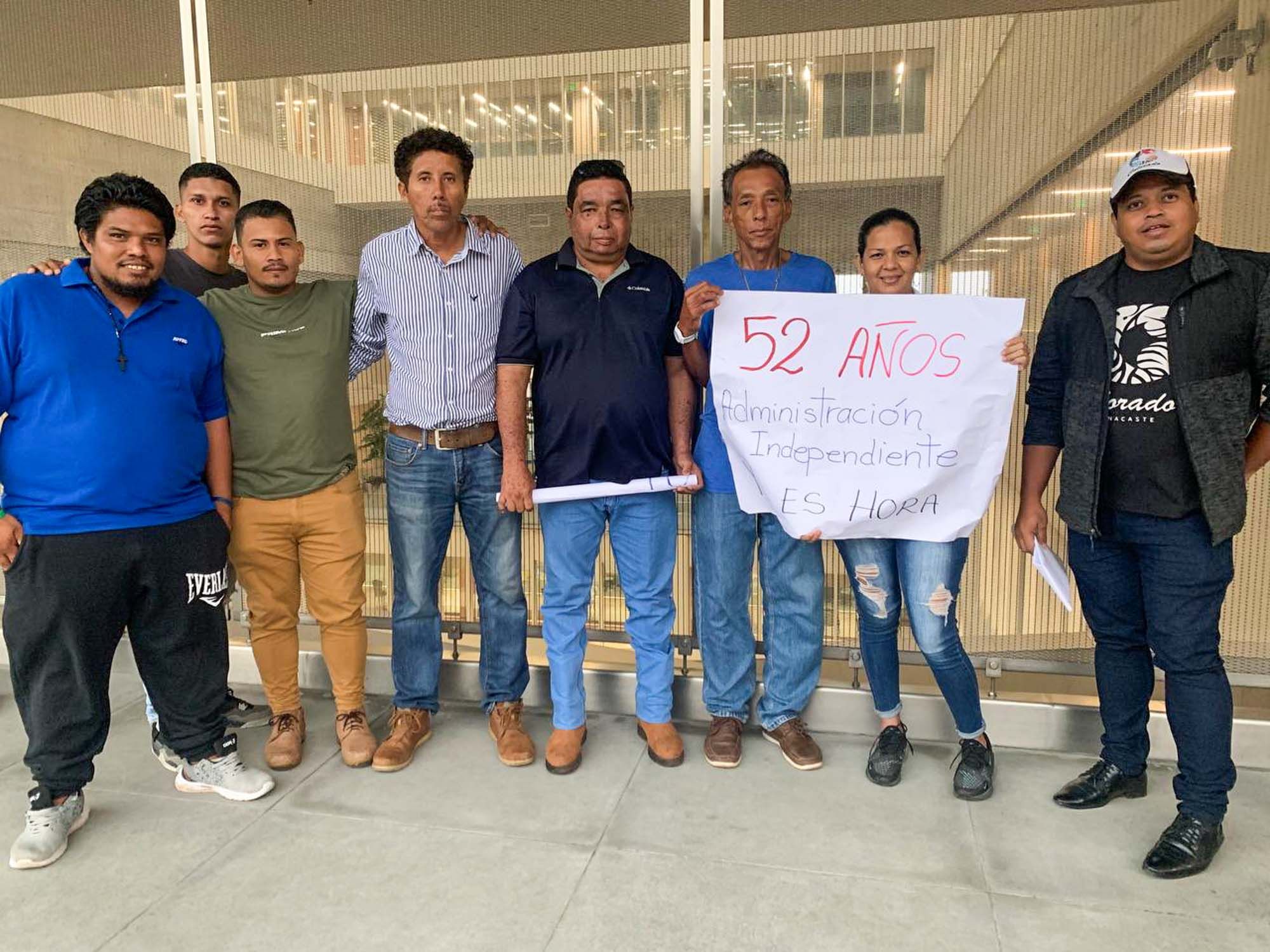
Residents of several Colorado communities such as Peñas Blancas, Santa Lucía and San Buenaventura showed up for the audience at the plenary session on August 23. Photo: Alejandro Duran L.
The president of the Santa Lucia neighborhood association, Eliecer Matarrita, was also among the group. According to him, the community has looked for ways to meet their needs on their own, such as when they didn’t have a health center nearby. A resident donated land, and with funds from the municipal district council, they managed to set one up. Later, they took up collections among neighbors to improve the place.
Matarrita explained that cantonship would also allow them to better exploit their economic potential, for example, tourism and fishing opportunities. The supervisor of Colorado agrees with this. She also believes that the district has the capacity to develop completely independently.
“The entire south of our district borders the Gulf of Nicoya. So that’s something that we haven’t exploited right now. Being a canton, we can apply the Maritime Land Zone Law and create our own regulations,” she told The Voice.
To Wilman, the fact that Colorado has its own territorial administration is a compelling reason that demonstrates its ability to be a canton. Since 1970, Colorado has had a municipal district council, a body that functions almost like a municipality. They administer their own budget but the local municipal government, in this case the Municipality of Abangares, is in charge of approving amounts.
According to the person in charge of training for the Municipal Education and Training and Local Development Institute, Vladimir Cunningham, it’s an administrative decentralization in terms of services. “The spirit of the law that creates municipal district councils is to create this body in those territories that, due to geographical distance or historical reasons, are separated from their mother municipality,” he explained.
People who live in districts that have this type of body elect the council members and the supervisor on the same date as the municipal elections. They also vote for the mayor’s office and Abangares’ municipal council members.
After these statements were made, The Voice contacted Mayor Heriberto Cubero again to find out his position, but by the deadline for this article, he hadn’t replied.
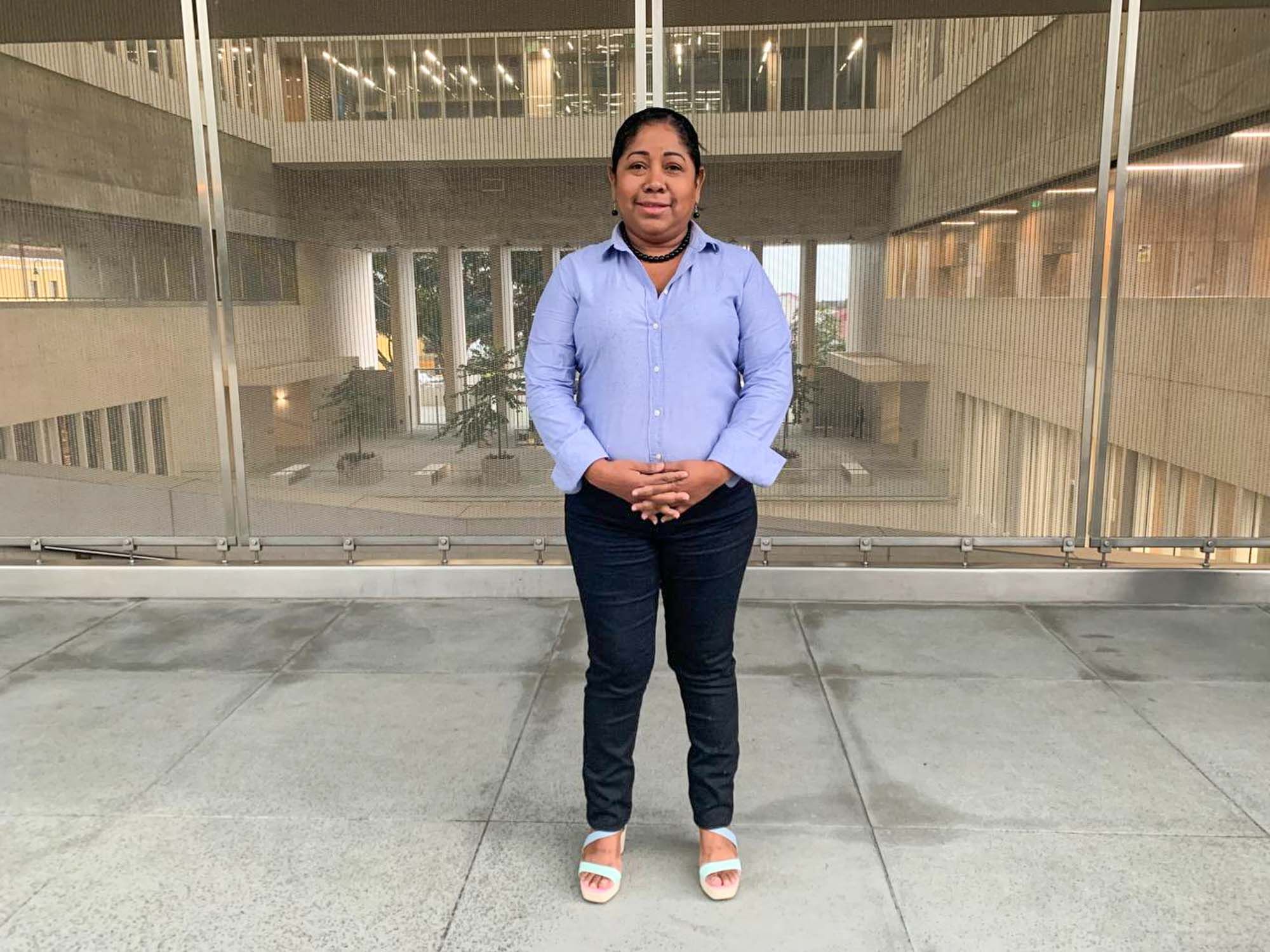
Maria Wilman Acosta is Colorado’s district supervisor. This public figure is popularly elected on the same date and under the same conditions as the mayor. Photo: Alejandro Duran L.
A Step Forward to Avoid the Plebiscite
For the community group from Colorado, it has been important to go to the assembly, especially after the end of July, when the Municipal Council of Abangares approved that the municipality request endorsement from the Supreme Electoral Court (TSE for the Spanish acronym) to hold a plebiscite in the canton.
Mayor Heriberto Cubero’s proposal, with the support of two council members from his National Liberation caucus, is an effort to find out the positions of citizens regarding the possibility that the district of Colorado separate from Abangares and become a canton.
That’s why Cubero also asked legislators not to advance further with the bill that would create the canton of Colorado.
With te council’s approval, the municipality will continue with the necessary procedures indicated in the Popular Consultations at the Cantonal and District Levels Manual, which includes making a formal request to the TSE, forming a Popular Consultation Coordinating Commission and dictating the regulations for holding plebiscites. This can take years.
According to Cubero, it’s important to consult the population before the 57 legislators decide the direction of the canton since the possible cantonship of Colorado would affect the other three districts of Abangares.
“The soundest thing is to have a clear proposal, scientifically documented. What do I want to get with that? That, if the legislator is going to make a decision, one of the considerations that should be taken into account is what the people are thinking,” he said.
Cubero expressed certain concerns about the possible cantonship, among them the economic solvency of Colorado and the deficit that, according to him, it would generate in the Municipality of Abangares’ budget.
“The Comptroller comes and tells you, ‘look, if you don’t pay me the deficit first, you can’t present me with new positions, you can’t say that you’re going to do x projects because first, you have to pay me the deficit,'” the mayor said.
However, the result of the possible plebiscite would not be binding. In other words, if the majority of the population votes that they do agree with the cantonship, it won’t be created automatically. The same is true if the result is negative.
Cubero also mentioned that the San Buenaventura Integral Development Association (the second most populous village in Colorado) doesn’t agree with the cantonship of Colorado, but instead, they want to be the canton’s fifth district.
The Voice contacted the president of the San Buenaventura ADI to find out the reasons for his position. However, he commented that he had no interest in responding to the inquiries.
Positions within the same town of San Buenaventura are very different. The school’s Board of Education, the Catholic Church’s committee and the San Buenaventura ASADA support creating the canton of Colorado, according to documents that they issued to the district administration, which this medium has a copy of.
Decision Depends on the Legislators
According to article 168 of the Political Constitution, only the Legislative Assembly can modify the country’s territorial organization, including provinces and cantons. To create the canton of Colorado, two thirds of the 57 legislators need to vote for it.
In fact, this isn’t the first bill to advance in Congress to make Colorado a canton. In 1995, Congress approved a bill in the first debate, but it ended up being shelved.
To approve a file seeking a cantonship, the Legislative Assembly must consider certain requirements. For example, article 9 of the Law on Administrative Territorial Division establishes that any canton that is created must have 1% of the country’s total population.
Colorado currently doesn’t have that population, but an exception to that rule is if the district is far from its administrative center and has a hard time communicating with it, under the recommendation of the National Territorial Division Commission. The minimum required distance is not defined.
The last districts to achieve their cantonship did so under this exception. Monteverde is located 62 kilometers (38 miles) from the canton of Puntarenas’ center, and Puerto Jimenez is 116 kilometers (72 miles) from Golfito. Colorado’s center is 34 kilometers (21 miles) from Las Juntas.
Editor’s note: This article was modified on August 29th at 12:30. In its first version a source indicated that, on municipal elections, the districts with a municipal district council vote only for council members and the supervisor. After subsequent verifications, we noticed that people who live in this type of bodies vote on four ballots: mayor’s office, municipal council members, district council members and the supervisor.


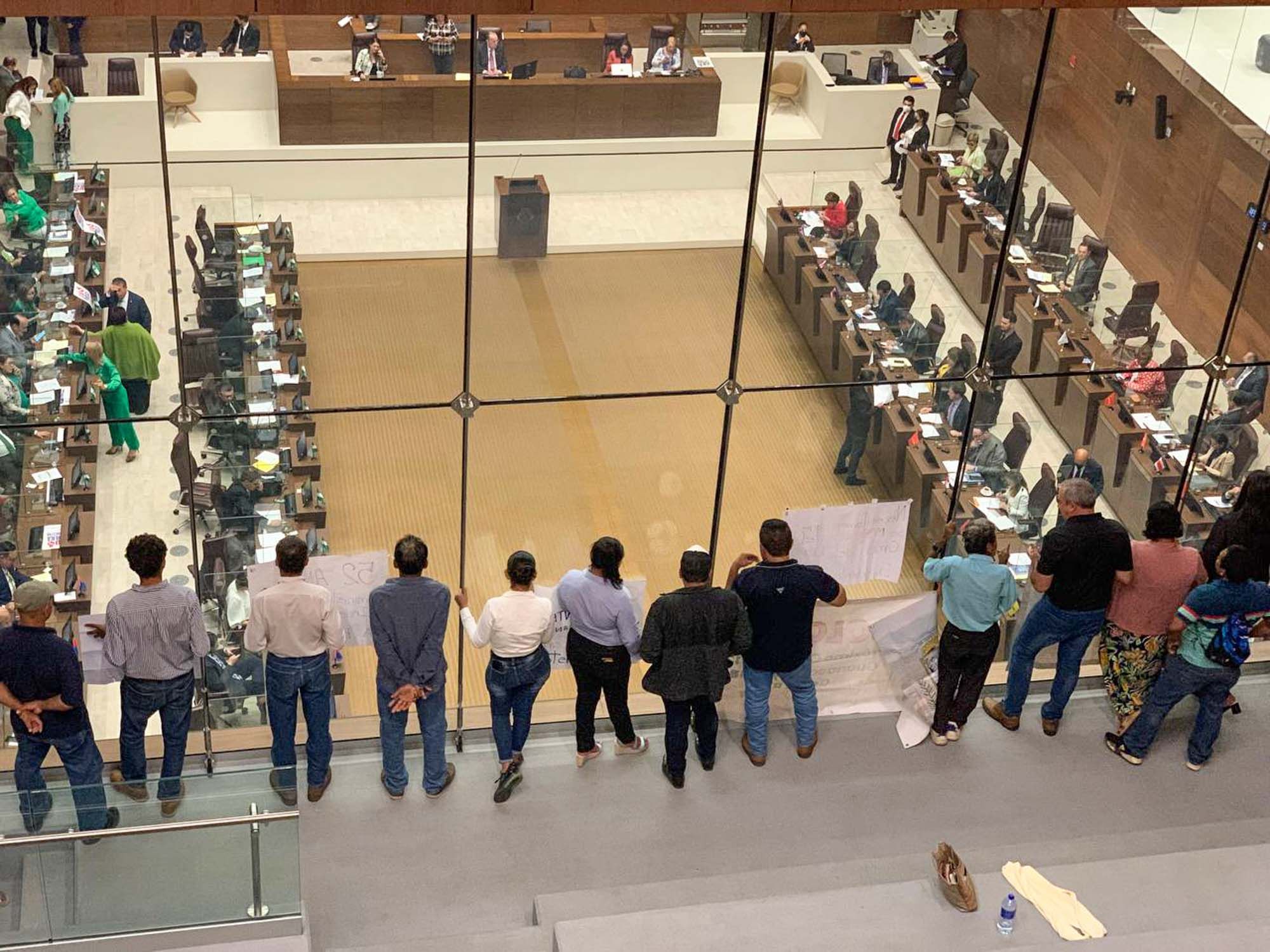
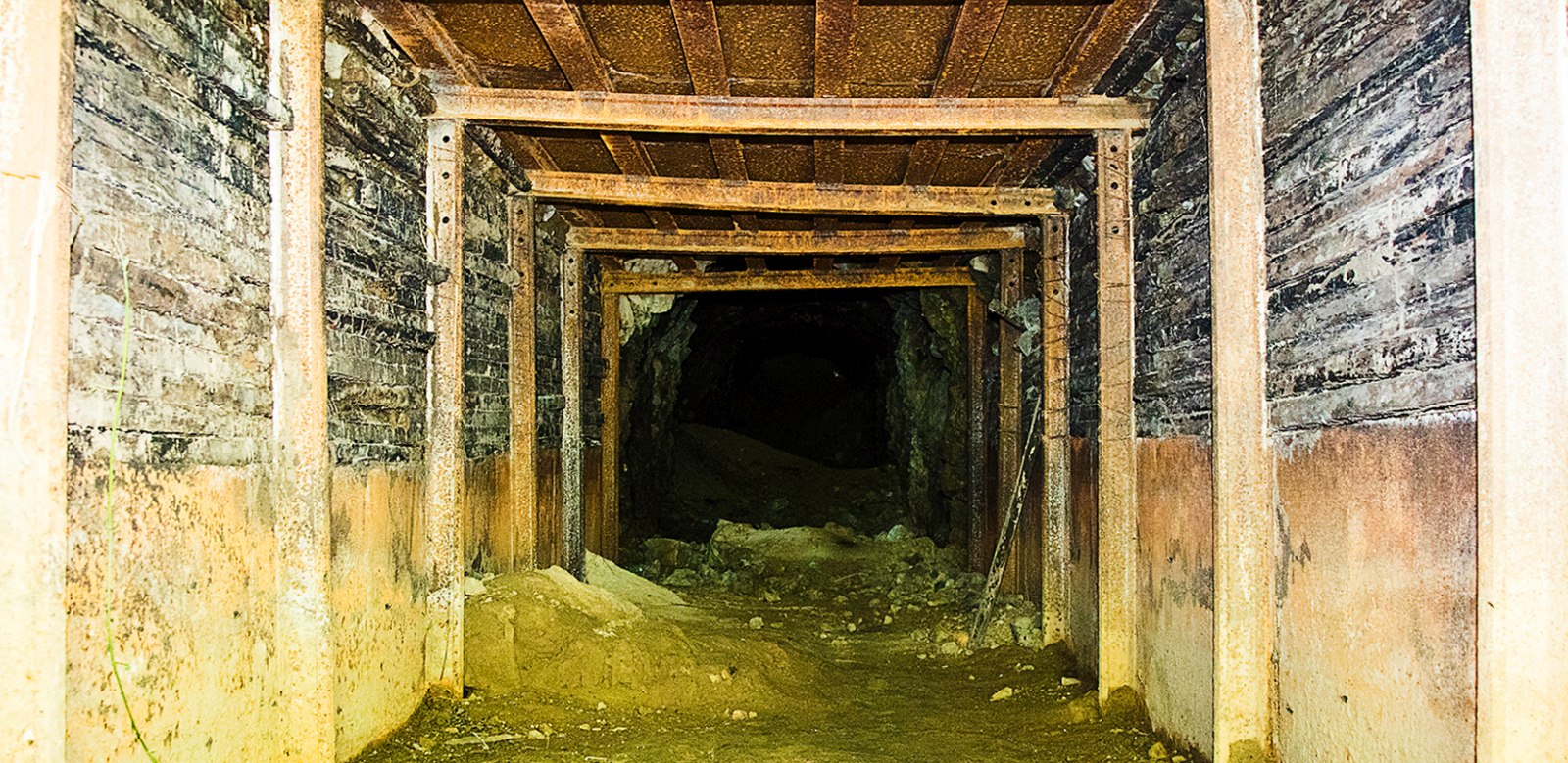
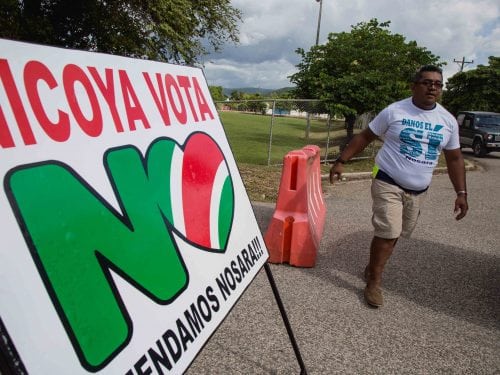
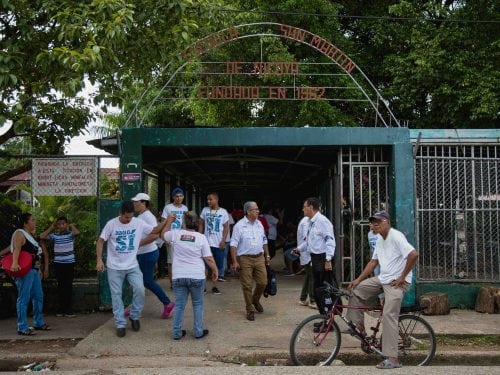

Comments